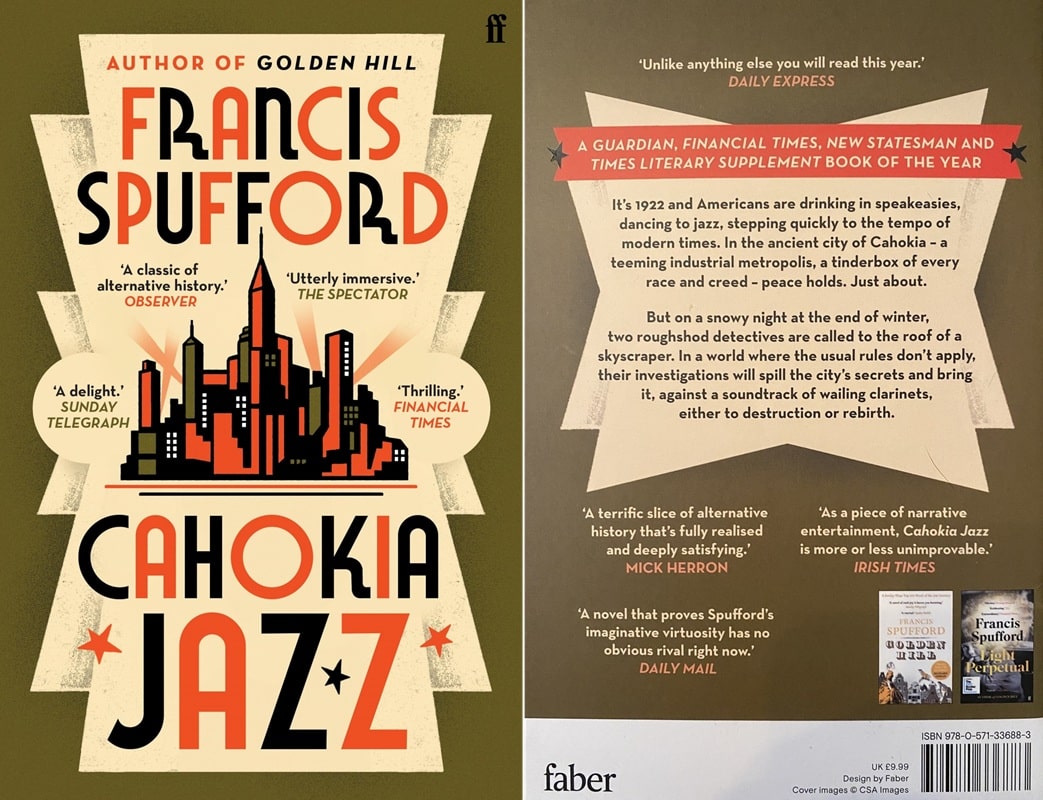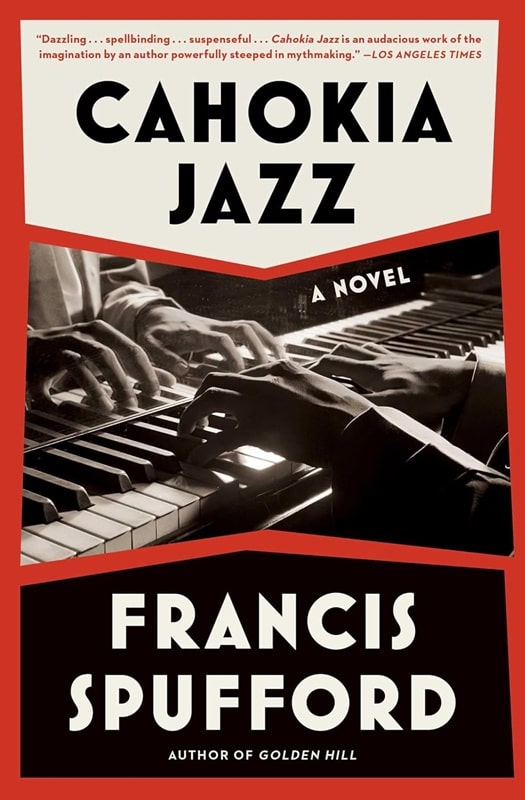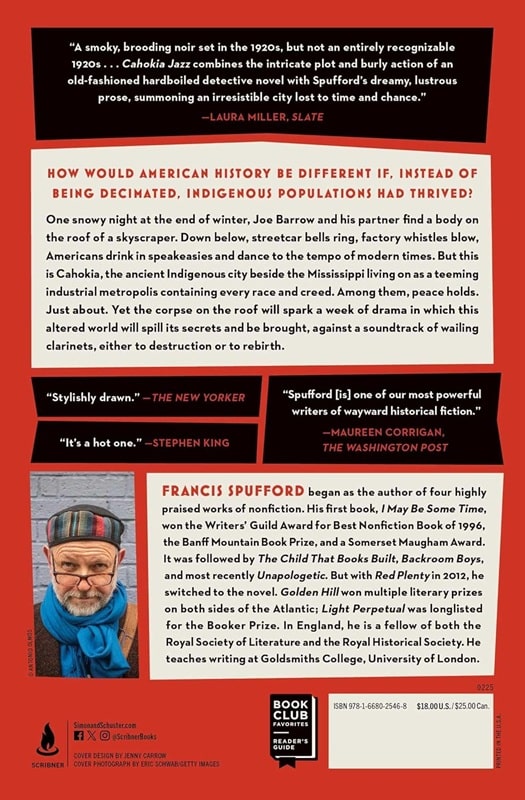Not Your Average Standard: Cahokia Jazz by Francis Spufford

This is a strange (in a good way) hybrid of alternate history (a 2023 Sidewise Award winner, in fact), syncretism, crime noir, and Christological sacrifice. Oh, and it has a little something to do with jazz, specifically that of the 1920s hot jazz era played in bars and brothels.
Let’s take these in order. The alternate history is the invention of Cahokia, in reality a prehistoric Native American settlement around some 80 surviving earthworks today preserved as the Cahokia Mounds archeological park located directly across the Mississippi River from St. Louis Missouri, as a Prohibition-era multi-ethnic capital city in a U.S. state formed by an alliance of Native American tribes. Cahokia has its own language, and although Catholic-converted Native Americans comprise the majority, there are various ethnic communities (that’s the syncretism part), including a large African American presence, and, as you might expect, tension among them.
[Click images to jazz them up.]
 |
 |
Cahokia Jazz (Scribner paperback edition, February 4, 2025)
The crime is the murder of a Ku-Klux Klan affiliated minor bureaucrat that copies ritualistic Aztec human sacrifice, conducted on the roof of a government building that poses questions of logistical improbabilities. Such questions are pondered by the ethically-challenged detective team of Phineas Drummond, a white Army veteran of the war in Russian Alaska (cf. alternate history) and partner fellow veteran, our noir hero, Joe Burrow. Of mixed-race heritage, (indigenous and Black), Burrow is torn between his detective duties and (wait for it) his part-time gig as a highly regarded jazz pianist in the local speakeasies.
Detective heroes with seeming odd sidelines do crop up in crime fiction. G.K. Chesterson’s Father Brown comes to mind. And Harry Bosch is a serious jazz fan. But I think making your detective hero an accomplished jazz musician is a first (and certainly a first to take place in the complex world building of the imagined Cahokia). But I’m just not all that certain it is essential to the plot, other than to provide an existential crisis for the main character to ponder in considering the proper path of his life.
Spufford could have left out the jazz element and still maintained the noir plot line. But then readers would miss out on such, dare I say it, melodic passages such as this describing Barrow playing with the Dolphus Big Band.
In the solo forms in which Barrow had been working it through these last few days. more often on tabletops and counter edges than on an actual instrument, Morton’s tune got all its play from a stretched bottom hand and a stretched top hand on the keys, giving you effectively four lines as pinkies and thumbs worked fast and way apart. In the band version the tune dismantled into four parts, for four separate musicians. The opening was a line-up of separate calls. Dee-doo, dee-do. Dolphus wailed, Stukely honked, he jangled and Dutch doomba-doomba’d. Then all in together for the brass annunciator blare of the tune, Willie doing the flatfooted beat of the stomp underneath, Dolphus and Stukely jousting, he and Dutch mainly rhythm at this point… Barrow ran his bottom hand at a different tempo, started to throw in grace notes, trills, trips to the wild far corners of the keyboard… the boundaries between solos started melting…One more chorus and they stopped. A happy roar from the room. Dolphus was grinning. Stukely gave Barrow an estimating nod.
The jazz element aside, we’re in hardboiled Dashiell Hammet territory, complete with intrigue among competing shady parties, political and police corruption, and, of course, a doomed and potentially deadly love interest. Not to mention a character that alludes to Ursula K. Le Guin, to whom the book is cryptically dedicated, and who Spufford quotes in an afterword the line from The Left Hand of Darkness: “Without the blood bond, the arch would fall, you see.”
The blood bond in Cahokia Jazz is an amalgamation of Native American lore and Catholic mythology that comes full circle in the denouement. I won’t give that away, except to say that it ends badly for many. But then, this is noir novel, and how else could it end?
David Soyka is one of the founding bloggers at Black Gate. He’s written over 200 articles for us since 2008. See them all here.
A wonderful book. My favorite of that year
LOVED this book. One of the best alternate timeline stories ever.
Curious that, while jazz occupies a large part of the novel, it is another art form, cinema, that actually drives a key element of the plot. Still a well-done alt-history, in any case.
This sounds quite interesting (and perhaps tips the hat to “The Yiddish Policemen’s Union”).
Interesting fact– there was some discussion of Oklahoma being an “Indian Only” state. I’m not sure how serious they were, or how far they got, but there were discussions.
[…] review of Cahokia Jazz by Francis Spufford is up at BlackGate. You can sell all my BlackGate reviews […]